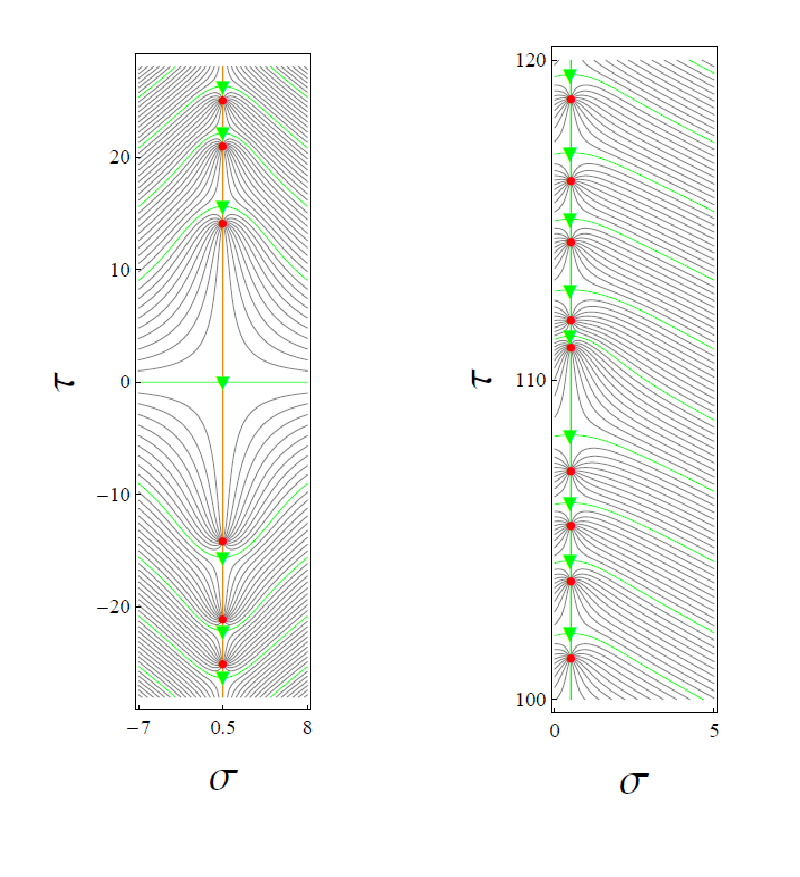Einstein in 1905, in his explanation of the photoelectric effect, postulated that light, the quintessential wave, had to possess particle-like properties. In the course of 1923-24, de Broglie, analyzing electron scattering from metal surfaces, postulated that electrons, the quintessential particles, must possess wave-like properties. In 1928, Bohr made the first attempt to reconcile the two viewpoints and introduced the concept of complementarity (or, in a more restricted sense, wave-particle duality), and thus the by now nearly 100 years history of complementarity has started.
We begin with a brief overview of the history of quantitative complementarity relations. A particle going through an interferometer can exhibit wave-like or particle-like properties. The first quantitative duality relation was obtained by Greenberger and Yasin [1], between the strictly single-partite properties: predictability $P = |\rho_{11} − \rho_{22}|$ and visibility $V = 2|\rho_{12}|$ and has the form
$$
\qquad \qquad P^2 + V^2 \le 1. \qquad \qquad (1)
$$
In a seminal study of the two-path interferometer, Englert introduced detectors into the interferometer arms and
defined the path distinguishability, D, as the discrimination probability of the path detector states [2]. He derived a
relation between this type of path information and the visibility $V = 2|\rho_{12}|$ of the interference pattern, in the form
$$
\qquad \qquad D^2 + V^2 \le 1. \qquad \qquad (2)
$$
In a follow-up [3], Englert and Bergou showed that $D$ is a joint property of the system and the meter to be clearly
distinguished from predictability, which is a strictly single partite property. They showed that (2) corresponds to
the so-called which-way sorting (post-selection) of the measurement data. They also introduced the quantum erasure
sorting, which led to the duality relation $P^2 + C^2 \le 1$, where the coherence $C$ is a joint property of the system and
detectors. Most importantly, they conjectured that $D$ should be related to an entanglement measure. Taking up
this conjecture, the complete bipartite (particle-meter) complementarity relation, connecting complementarity, i.e.,
visibility of the interference pattern, $V$, and path predictability, $P$, to entanglement, was found in [4], in the form of a *triality relation*,
$$
\qquad \qquad P^2 + C^2 +V^2 \le 1. \qquad \qquad (3)
$$
Here $C$ is the concurrence, emerging naturally as part of the completeness relation for a bipartite system. In [5], this
*triality relation* was further generalized to multi-path ($n$-path) interferometers. These works completed the research
on quantitative complementarity and brought the Bohr-Einstein debate to a very satisfying closure. In particular, Eq.
(3), which is a triality relation, displays explicitly that entanglement is the genuinely quantum contribution with no
classical counterpart, whereas visibility, quantifying wave-like behavior, and predictability, quantifying particle-like
behavior, can be regarded as classical contribution.
In all of the works discussed above, the $l_2$ measure of coherence was employed. Recently, however, a resource theory of quantum coherence was developed and two new coherence measures were introduced [6]. The $l_1$ measure is the trace distance, the entropic measure is the entropic distance of a given state to the nearest incoherent state. In the
second part of the talk we present our recent results for multi-path interferometers, employing the new measures.
Using these measures, we derived entropic and $l_1$ based duality relations for multi-path interferometers [7, 8]. The $l_1$
based duality relation for n-path interferometers is
$$
\qquad \qquad \left( \frac{C+D-\frac{n-2}{n-1}}{\frac{\sqrt{n}}{n=1}} \right)^2
+
\left(\frac{C-D}{\sqrt{\frac{n}{n-1}}}\right)^2
\le 1,
\quad
C,D>0,
\qquad \qquad (4)
$$
where $C$ is the $l_1$ measure of coherence, generalizing the visibility $V$. To close, we will present recent results generalizing duality relations to finite groups [9], recent entropic duality relations [10], and discuss recent developments, showing that relations like Eq. (1) can be derived from intrinsic properties of quantum states, without referring to measurements [11, 12].
References
[1] D. M. Greenberger and A. Yasin, ”Simultaneous wave and particle knowledge in a neutron interferometer,” Phys. Lett. A
128, 391 (1988).
[2] B.-G. Englert, ”Fringe Visibility and Which-Way Information: An Inequality,” Phys. Rev. Lett. 77, 2154 (1996).
[3] B.-G. Englert and J. A. Bergou, ”Quantitative quantum erasure,” Opt. Commun. 179, 337 (2000).
[4] M. Jakob and J. A. Bergou, ”Quantitative complementarity relations in bipartite systems: Entanglement as a physical
reality,” Opt. Commun. 283, 827 (2010) [also as arxiv:0302075].
[5] M. Jakob and J. A. Bergou, ”Complementarity and entanglement in bipartite qudit systems,” Phys. Rev. A 76, 052107
(2007).
[6] T. Baumgratz, M. Cramer, Tand M. B. Plenio, ”Quantifying Coherence,” Phys. Rev. Lett. 113, 140401 (2014).
[7] E. Bagan, J. A. Bergou, S. S. Cottrell, and M. Hillery, ”Relations between Coherence and Path Information,” Phys. Rev.
Lett. 116, 160406 (2016).
[8] E. Bagan, J. Calsamiglia, J. A. Bergou, and M. Hillery, ”Duality Games and Operational Duality Relations,” Phys. Rev.
Lett. 120, 050402 (2016).
[9] E. Bagan, J. Calsamiglia, J. A. Bergou, and M. Hillery, ”A generalized wave-particle duality relation for finite groups,”
Journal of Physics A: Math. Theor. 51, 414015 (2018).
[10] E. Bagan, J. A. Bergou, and M. Hillery, ”Wave-particle duality relations based on entropic bounds for which-way information,” Phys. Rev. A 102, 022224 (2020).
[11] X. L¨u, ”Quantitative wave-particle duality as quantum state discrimination”, Phys. Rev. A 102, 02201 (2020).
[12] X. L¨u, ”Duality of path distinguishability and quantum coherence”, Phys. Lett. A 397, 127259 (2021).

Adrian Ortega
Alain Joye
Alberto Marmodoro
Artem Kandaurov
Attila Portik
Aurél Gábris
Christine Silberhorn
Craig Hamilton
Daniel Štěrba
Daniele Amato
David Čapek
Divya Goel
Eric Glasbrenner
František Štampach
Gernot Alber
Giuliano Angelone
Gregory Berkolaiko
Hector Spencer-Wood
Horia Cornean
Igor Jex
Iskender Yalcinkaya
Iva Tkacova
Ivan Richter
Jan Mareš
Jan Pekař
Janos Bergou
Jaroslav Dittrich
Jaroslav Novotný
Jiří Lipovský
Jiří Tolar
Johannes Seiler
Kevin Zelaya
Konstantin Pankrashkin
Leszek SIRKO
Ludvík Cigna
Marco Vogel
Mario ZIMAN
Martin Štefaňák
Matěj Tušek
Michal Matulík
Miloslav Dušek
Miloslav Znojil
Muthuganesan Rajendran
NANA SIDDHARTHA
Orsolya Kálmán
Paolo Facchi
Pavel Exner
Philippe Charron
Rafael Benguria
Raffaele Carlone
Samuel Zahorec
Sarah Croke
Saverio Pascazio
Shivani Singh
Stanislav Skoupý
Steve Barnett
Tamás Kiss
Uzy Smilansky
Viviana Viggiano
Vladimir Lotoreichik
Vlasios Petousis
Vlastimil Hudeček
Vojtěch Kala
Václav Potoček
Václav Zatloukal
Wolfgang Schleich
Zdenek Hradil

